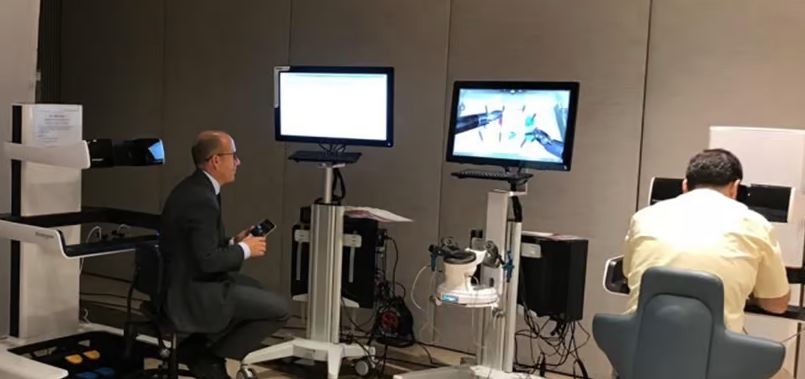Download PDF
Research in Real-Time
Technology Category
- Application Infrastructure & Middleware - Database Management & Storage
Applicable Industries
- Education
Applicable Functions
- Product Research & Development
Services
- Data Science Services
The Challenge
The National Snow and Ice Data Center (NSIDC) at the University of Colorado is conducting research on the impact of global warming. The project, titled 'Data Rods: Enabling Time-Series Analysis of Massive Multi-Modality Cryospheric Data', is focused on the Greenland ice sheet. The challenge was to process billions of time-series information in real-time to enable a time-centric change analysis of data. The database for the project contains over 10 billion persistent objects. Indexed queries to the database can span millions of data rods simultaneously across time and space and must achieve response times of only a few seconds. Using a relational database was completely impractical due to the large size of the data sets and required response time.
About The Customer
The National Snow and Ice Data Center (NSIDC) at the University of Colorado is a research institution focused on the study of the cryosphere - the portions of the Earth's surface where water is in solid form. The NSIDC is currently working on a project titled 'Data Rods: Enabling Time-Series Analysis of Massive Multi-Modality Cryospheric Data'. The project's initial target area is the Greenland ice sheet. The NSIDC is developing a system to answer questions related to the impact of global warming, such as how dust and other pollutants alter the reflective properties of snow, how global warming is impacting the Western U.S. water supply, and how permafrost melt will affect local hydrology and soil stability, as well as increase emissions of methane and other trace gases.
The Solution
The NSIDC chose to use the Versant Object Database to solve their data management challenges. This pure-object database was ideal for the project as it combines the flexibility to store arbitrarily complex data objects with true database management systems functionality: persistence, distribution, integrity, concurrency, and recovery. The Versant database easily provides the incredibly high data ingestion rates the NSIDC time-series analysis demands by eliminating the mapping layer and abundance of index structures otherwise required with a relational database. The database model representation is the same as the in-memory object model without any intermediate data definition language or runtime translation layer. Furthermore, it transparently manages object distribution across any number of physical database servers as if they are one logical database, thus providing object migration and distributed transactions.
Operational Impact
Quantitative Benefit
Related Case Studies.

Case Study
IoT platform Enables Safety Solutions for U.S. School Districts
Designed to alert drivers when schoolchildren are present, especially in low-visibility conditions, school-zone flasher signals are typically updated manually at each school. The switching is based on the school calendar and manually changed when an unexpected early dismissal occurs, as in the case of a weather-event altering the normal schedule. The process to reprogram the flashers requires a significant effort by school district personnel to implement due to the large number of warning flashers installed across an entire school district.

Case Study
Revolutionizing Medical Training in India: GSL Smart Lab and the LAP Mentor
The GSL SMART Lab, a collective effort of the GSL College of Medicine and the GSL College of Nursing and Health Science, was facing a challenge in providing superior training to healthcare professionals. As clinical medicine was becoming more focused on patient safety and quality of care, the need for medical simulation to bridge the educational gap between the classroom and the clinical environment was becoming increasingly apparent. Dr. Sandeep Ganni, the director of the GSL SMART Lab, envisioned a world-class surgical and medical training center where physicians and healthcare professionals could learn skills through simulation training. He was looking for different simulators for different specialties to provide both basic and advanced simulation training. For laparoscopic surgery, he was interested in a high fidelity simulator that could provide basic surgical and suturing skills training for international accreditation as well as specific hands-on training in complex laparoscopic procedures for practicing physicians in India.

Case Study
Implementing Robotic Surgery Training Simulator for Enhanced Surgical Proficiency
Fundacio Puigvert, a leading European medical center specializing in Urology, Nephrology, and Andrology, faced a significant challenge in training its surgical residents. The institution recognized the need for a more standardized and comprehensive training curriculum, particularly in the area of robotic surgery. The challenge was underscored by two independent studies showing that less than 5% of residents in Italian and German residency programs could perform major or complex procedures by the end of their residency. The institution sought to establish a virtual reality simulation lab that would include endourological, laparoscopic, and robotic platforms. However, they needed a simulator that could replicate both the hardware and software of the robotic Da Vinci console used in the operating room, without being connected to the actual physical console. They also required a system that could provide both basic and advanced simulation training, and a metrics system to assess the proficiency of the trainees before they performed surgical procedures in the operating theater.

Case Study
Edinburgh Napier University streamlines long-distance learning with Cisco WebEX
• Geographically dispersed campus made in-person meetings costly and inconvenient.• Distance-learning programs in Malaysia, India, and China required dependable, user-friendly online tools to maximize interaction in collaborative workspaces.• Virtual learning environment required a separate sign-in process, resulting in a significant administrative burden for IT staff and limited adoption of collaboration technology.

Case Study
8x increased productivity with VKS
Before VKS, a teacher would spend a lot of time showing a group of 22 students how to build a set of stairs within a semester of 120 hours. Along with not leaving the teacher much time to provide one-on-one support for each student to properly learn carpentry, it also left a considerable amount of room for error. Key information would be misinterpreted or lost as the class was taught in the typical show-and-tell way.

Case Study
Scalable IoT Empowering GreenFlex's Sustainable Growth
GreenFlex, a company that supports sustainable development, decarbonization, and energy efficiency, faced several challenges in its quest to expand its business. The company needed to deploy a robust and sustainable IoT technology to support its growth. It was crucial for them to monitor and control devices at customer sites in a safe and reliable manner. They also needed to integrate devices across a range of communication protocols and gather and act on data to meet efficiency targets. GreenFlex had previously built IoT capabilities into its digital platform, GreenFlexIQ, to monitor and manage customer sites remotely. However, they soon realized that they needed a new platform to support their ambitions. They needed a platform that could scale to connect more devices for production management and make it easier for the operations team to manage devices in the field.





